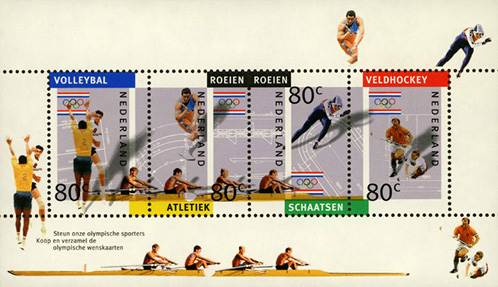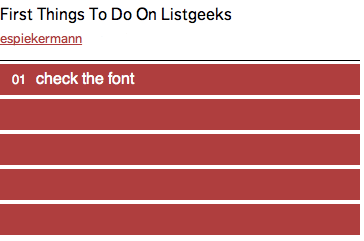 Erik Spiekermann is a highly accomplished, Berlin-based designer, typographer, educator and information architect. As the founder of both MetaDesign (1979) and Edenspiekermann (2007) Erik has worked on large-scale branding projects for a host of high profile international clients over the years, including Audi, Deutsche Bahn, Nokia and The Economist (he completely redesigned the magazine in 2001). In 1988 he founded FontShop (with Joan Spiekermann and Neville Brody) in order to facilitate the production and distribution of digital typefaces. Though he’s won numerous prestigious awards for his work, including – most recently – a Lifetime Achievement Award from the German Design Council, and could easily rest on his laurels, Erik remains fully engaged with both emerging technologies and, more importantly, the many younger designers and typographers who continue to be inspired by his dedication, focus and artistry. The Bauhaus Archive/Museum of Design in Berlin is currently running, “erik spiekermann. the face of type,” (through June 6th, 2011) and Erik will be MCing at the upcoming Typo London (October 20th-22nd, 2011), among other engagements. After you’ve read the below interview, be sure to check out Erik’s Listgeeks lists.
Erik Spiekermann is a highly accomplished, Berlin-based designer, typographer, educator and information architect. As the founder of both MetaDesign (1979) and Edenspiekermann (2007) Erik has worked on large-scale branding projects for a host of high profile international clients over the years, including Audi, Deutsche Bahn, Nokia and The Economist (he completely redesigned the magazine in 2001). In 1988 he founded FontShop (with Joan Spiekermann and Neville Brody) in order to facilitate the production and distribution of digital typefaces. Though he’s won numerous prestigious awards for his work, including – most recently – a Lifetime Achievement Award from the German Design Council, and could easily rest on his laurels, Erik remains fully engaged with both emerging technologies and, more importantly, the many younger designers and typographers who continue to be inspired by his dedication, focus and artistry. The Bauhaus Archive/Museum of Design in Berlin is currently running, “erik spiekermann. the face of type,” (through June 6th, 2011) and Erik will be MCing at the upcoming Typo London (October 20th-22nd, 2011), among other engagements. After you’ve read the below interview, be sure to check out Erik’s Listgeeks lists.
Listgeeks: As a result of your success, you’re involved with numerous conferences, the subject of countless student projects (and, as a result, queries), and of course called upon to deal with a wide variety of very different types of clients through your company, Edenspiekermann. In the midst of all the action, how do you manage to stay inspired and excited about design and typography?
Erik Spiekermann: If it were down to me, I’d simply collapse and read all day, and especially at weekends. But I have never learned to say “no,” so I have to find the time to answer questions from students, prepare for lectures, travel there, write columns for magazines, write forewords for all my friend’s books, etc. All this next to my “normal” work, which is running a design firm with some 40 people. The only way I can do this is by avoiding it until the pressure is too much to bear, until I run out of excuses or until my friends become desperate because they, in turn, might have promised my involvement to a third party. Like these few questions: I put off answering them for 3 months now, where it would have only taken half an hour to do so in February. But there were always other people who gave me more grief. . .

LG: Whether type-design-related or brand/identity-oriented projects (Audi, Nokia, Deutsche Bahn, BVG) for clients, it seems that if there’s a consistent emphasis, in your work over the years, on openness and accessibility. Would you say that the drive to communicate as transparently as possible is the single greatest motivator behind what you do?
ES: Yes. Simply because, like other designers, I am also a consumer and user of things and services. I presume that, if things annoy me because they don’t work or are ugly or (usually) both, then they’ll annoy other people as well.

LG: Do you feel that design, as an increasingly web-oriented activity, is in danger of becoming too uniform, internationally? In other words, is our visual sensibility merging at the expense of more local (or regional) innovation/variation that may have been prized in the past?
ES: Yes and no. For every service or website that thinks it has to communicate in international bad English, there are lots of activities that celebrate the local and regional. It’s just that, by definition, you would only be aware of them if you were part of that group. If you only travel the etherspace looking for stuff in your own language, that is what you’ll get. Learning languages is the key to other cultures, and they certainly exist. The more things get globalized, the more there will be local activities, expressed in a specific style. And if all of us knew about them, they wouldn’t be local anymore.
LG: Finally, what parallels would you draw, if any, between the emergence/application of web fonts in the last year or two and the early days of FontShop International, when you first started digitizing and licensing typefaces?

ES: Then, as now, we were ahead of the curve. The WOFF standard was co-developed by Erik van Blokland who interned with me before FontShop was even started and who has been on our TypeBoard ever since. And FSI was the first major foundry to work with Typekit because we believe that easy access is the key to working with new typefaces. I have always been active as a graphic designer in a studio full of designers, so – perhaps unlike some colleagues who only ever design typefaces or produce fonts – I have always known how they use fonts. Hardly anybody will spend much time looking; if it isn’t on their hard drive or on the server, they won’t use it. The foundries have to make it as painless as possible for users to find, download and pay for fonts. We’re beginning to get there with webfont services and standards like WOFF (except Safari), and the web is beginning to look better for it. There must be human need for variety, whether it is in art, music, literature or design. Technical constraints are never there to stay. Except perhaps gravity.
Listgeeks Home
Erik’s Lists on Listgeeks
Erik’s Fonts on Fontshop
Follow Erik on Twitter
